| |
 |
| |
|
After seeing Andy's item in the Maserati Club 'Newsletter', I decided that a visit to this show was not to be missed.
I wasn't disappointed. The Maserati Club had put on a most spectacular display and I am sure visitors will have appreciated the hard work that the Club events organiser, Simon Lees-Milne, must have put in to create such a splendid stand.
Not only were there some rare Maseratis on show, but alongside them an array of cars from that other well known motor manufacturer from Modena, Ferrari. On view for the first time in this country were a 1953 Ferrari 250MM coupé, the 375MM and the latest 360 Modena Spyder.
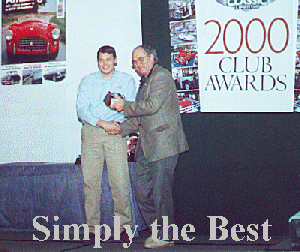
Photo by kind permission of Dave Smith
For his sterling work Simon was duly given the top award by Classic and Sports Car magazine, the main sponsor of the event, for "The most interesting selection of cars at the show". Well done Simon!
I would like to thank Simon for allowing me to publish the text that accompanied each vehicle on the stand.
My apologies to Roger, owner of the Sebring, for neglecting to include his car, but I was too busy chatting and forgot to take any photographs. |
| |
| |
 |
| |
| |
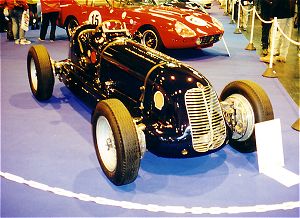 |
TIPO 6CM
Chassis No. 1535
A very successful Maserati. The 6CM first raced at Monte Carlo in the 1936 "Coppa Principe Ranieri"
and later that year finished in the first two places at the Nürburgring beating the works ERAs.
This display car competed in 5 GPs in 1936 driven by Frank McEvoy,
6 GPs in 1937 driven by J de Puy, 3 GPs in 1938 and the 1939 XIII GP de Tripoli.
|
| |
|
The car stayed in Italy until 1985, then went to Germany to the Hartmut Ibing collection and
in 1997 was bought by its present owner Roger Lucas, Vice President of the Maserati Club. The car can be seen racing regularly at Historic events in the UK and Europe, including Monaco,
Nürburgring, Klausen Hill Climb, Imola, Hockenheim and Goodwood revival meetings.
The car was kindly loaned by Roger Lucas. |
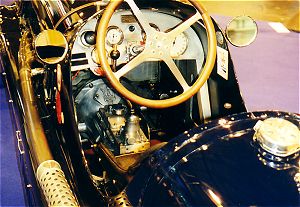 |
| |
| |
 |
| |
| |
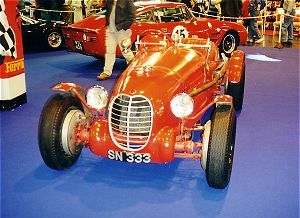 |
TIPO 4CS
Chassis No. 1535
This Tipo 4CS was originally fitted with the 1100cc engine and set new class speed records in 1935 and 1936. In October 1936 while attempting the 12 hour record, driven by Villoresi and Fosatti, it hit a dog, overturned, caught fire killing the unfortunate Fosatti.
The car was rebuilt in 1937 by Count 'Johnny' Lurani and Luigi 'Gigi' Villoresi and was fitted with Tecnauto IFS and competed in the 1937 Mille Miglia. |
| |
|
In 1938 the car was re-bodied and fitted with the 1500cc engine for the Portugese Grand Prix.
In 1939 it was sold to a Chinese business man in Singapore, was dismantled and buried for the duration of the war.
It was bought in 1969 by Ken Painter still in its dismantled state and very incomplete. For 18 years it was caringly restored to its 1938 specification by Ken. |
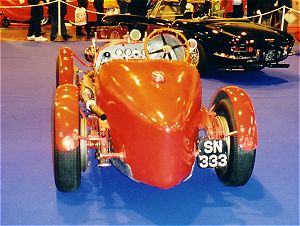 |
| |
| |
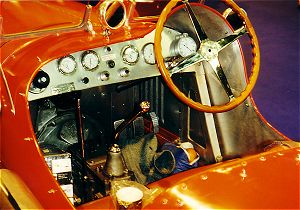 |
It is today raced very successfully in Historic meetings having twice
won the Ray Fielding Trophy (the Maserati Club's premier racing award) and is currently the holder of its class record at the Vintage and Sports Car Club Prescott Hill Climb.
The car was kindly loaned by Ken and Adam Painter. |
| |
| |
 |
| |
| |
TIPO 61
chassis No 2451
Birdcage Le Mans "Streamliner"
This car was originally built as a Tipo 60 with the 2-litre engine for the Camoradi team in the USA.
It was later converted to a Tipo 61 with the special streamlined body for the
1960 Le Mans, driven by Masten Gregory, but retired during the second hour while leading the race. |
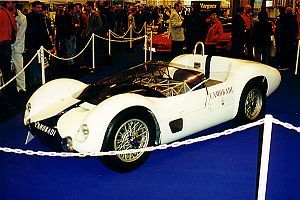 |
| |
| |
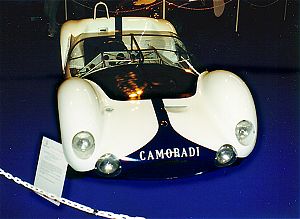 |
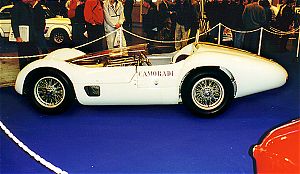
"10 mph quicker than the Testarossa Ferrari!" |
| |
The 'Birdcage' was timed on the Mulsanne Straight at 170mph, 10mph quicker than the Testarossa Ferrari. The car was sold to Frank Harrison in America and was raced at Leguna Seca by Jim Jeffords.
The car is now part of the Hartmut Ibing collection. |
| |
| |
 |
| |
| |
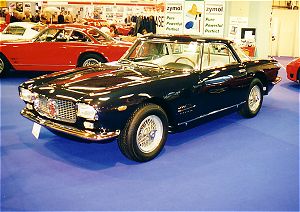 |
TIPO 103 chassis No AM 103 046
5000GT by Allemano
The 5000GT is one of the rarest Maserati road classics. The first series 5-litre cars had a 4-speed ZF gearbox, Weber 45 IDM carburettors, front disc brakes and rear drum brakes.
The series II had Lucas fuel injection, 5-speed gearbox and disc brakes on all four wheels.
The car was kindly loaned by Mr. Ludo Doorenweerd. |
| |
|
There were several bodies designed for this most exclusive of GTs and of the 34 cars produced 22 bodies were made by Allemano,
3 by Touring of Milan, 3 by Frua, 2 by Monterosa, 1 by Pininfarina, 1 by Bertone, 1 by Ghia and 1 by Michelotti. There are stories of a covertible 5000 GT by Vignale but as yet this has not been confirmed.
This car was first owned by Merli Brandini of Italy but then ended up in Venezuela where it was found five years ago and shipped to Belgium where the body was restored and has just had a full mechanical restoration by Bill McGrath Maserati.
|
| |
| |
 |
| |
| |
TIPO 3500GTI
A special bodied road race car.
This car is a "one-off" factory special made for Lippe. Factory records indicate that the car was originally a 3500GT coupé by Touring of Milan.
It is thought to have been re-bodied by Zagato for Lippe but Zagato will not confirm this in writing, although they do admit it now looks like their bodywork. |
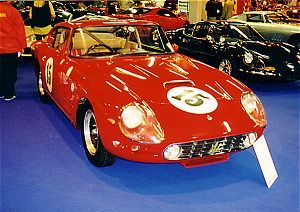 |
| |
|
The car was extensively raced in South Africa up to 1969, stored there until 1996 and returned to the UK in 1999 and was repainted in Maserati red.
It has been given FIA papers and is raced by its present owner and has competed this year at Silverstone in the Coys Festival, at the Goodwood Revival meet and at Brooklands. |
| |
| |
 |
| |
| |
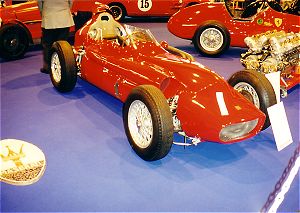 |
TIPO TEC-MEC 250
chassis No F415
The Tec-mec was designed and built by Valerio Colotti, the Maserati chassis and gearbox designer, after he left the factory in 1959 at his studio "Technica Meccanica".
The chassis uses smaller tubes than the 250F and is fitted with disc brakes, rack and pinion steering, independent front suspension with coil springs and adjustable dampers. |
| |
|
The car raced in the 1959 American Grand Prix at Sebring, driven by Fritz d'Ory, but retired with engine failure. It entered 5 other events in the USA and then disappeared.
It spent many years in the Donington Motor Museum and was purchased earlier this year by Barrie Baxter who now regularly races it in Historic events.
Once fully sorted it will be quicker than the 250Fs and should see Barrie on the podium many times.
|
| |
| |
 |
| |
| |
TIPO 250F
Between 1954 and 1958 a total of 32 cars were built, the last two in 1958 were for privateer Temple Buell in the USA.
During constant development there were three types of 250Fs. Earlier cars were fitted with a four speed gearbox, later cars had a five speed gearbox and modified brakes and the last cars with lightweight chassis in addition to the other modifications. |
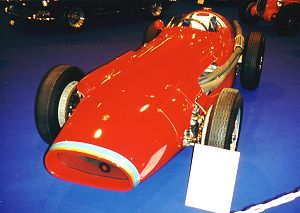 |
| |
|
Few would disagree that the 250F is the most classically beautiful post war Grand Prix car. Memorably driven by Stirling Moss, Bira, Luigi Musso, Jean Behra, Scarlatti, Joachim Bonnier, Gino Bertocchi and Maria Teresa de Filippis
to many successes culminating in Juan Manuel Fangio's world championship in 1957.
|
| |
| |
 |
| |
| |
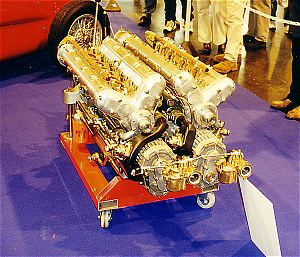 |
TIPO V-4
The 16 Cylinder Engine
This engine is a recreation of the power unit that projected the 1929 Tipo V-4 Maserati.
Known as the "Sedici Cilindri" this 16-cylinder was built around two Tipo 26B engines mounted on a common crankcase, with two crankshafts and gearing into a common box. |
| |
| |
|
The various component parts consist of 55 ball races, 27 gears plus 8 gears in the oil pumps, 2 crankshafts, 16 con-rods and pistons, 32 valves, 64 valve springs, four camshafts, two superchargers,
four oil pumps and two water pumps.
Both crankshafts run clockwise, driving a central gear which runs anti clockwise. This means the crown wheel and pinion are fitted the opposite way round. |
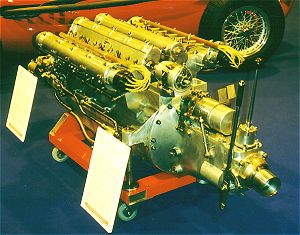 |
| |
| |
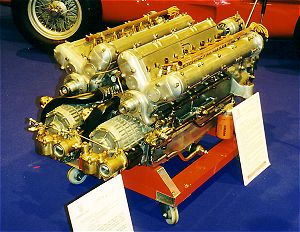 |
3960cc V16 cylinder at 25° with twin superchargers.
Power output was 305 bhp at maximum 5500 rpm.
With a top speed 150 mph on tyres of 3.25 x 19 front and 6.50 x 19 rear and all this with cable operated drum brakes. The drivers were very very brave men indeed! |
| |
| |
|
It was a monster to drive and very difficult to handle.
In a straight line metrely a matter of courage. The fastest speed for a racing car was recorded in July 1929 by a V-4 attaining 152.9 mph over 10 kilometers on the 25 mile circuit at Cremona in Italy.
During the 1929 Italian Grand Prix, Alfieri Maserati drove the v-4 to a lap speed of 124.2 mph, a record not beaten until 1954.
In 1930 the V-4 won the Tripoli Grand Prix driven by Baconin Borzacchini and in 1931 it was victorious in the Rome Grand Prix driven by Ernesto Maserati. |
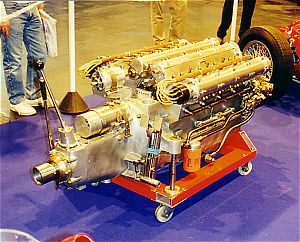 |
| |
| |
 |
| |
| |
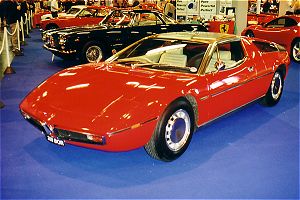 |
TIPO 117 'Bora'
The 'Bora' was Maserati's first mid-engined "Super-car" built to compete with the Ferrari 365/GTBB 'Boxer' and the Lamborghini 'Miura'.
Lavishly fitted with reclining leather seats it even has adequate luggage space for this type of car. The brakes all have ventilated discs operated by Citroen's high pressure hydraulic system. Air conditioning was standard. |
| |
| |
|
In 1968 Giulio Alfieri, then Technical Director of Officine Alfieri Maserati,
took on the design of the Bora and in 1969 the first prototype was ready for testing.
The Bora, named after a wind that blows in the north-east corner of the Adriatic Sea, was
unveiled at the Geneva Motor Show in 1971 and met with immediate approval.
Its combination of stunning looks, it was designed by Giorgio Giugiaro of Ital Design, powerful V8 engine and luxurious interior put it in a different class to its competitors. |
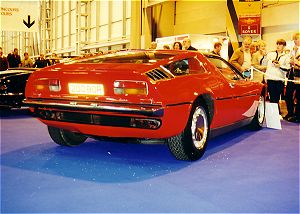 |
| |
| |
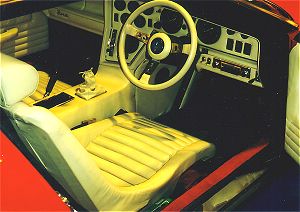 |
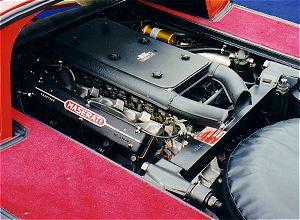 |
| |
| |

|
|
|